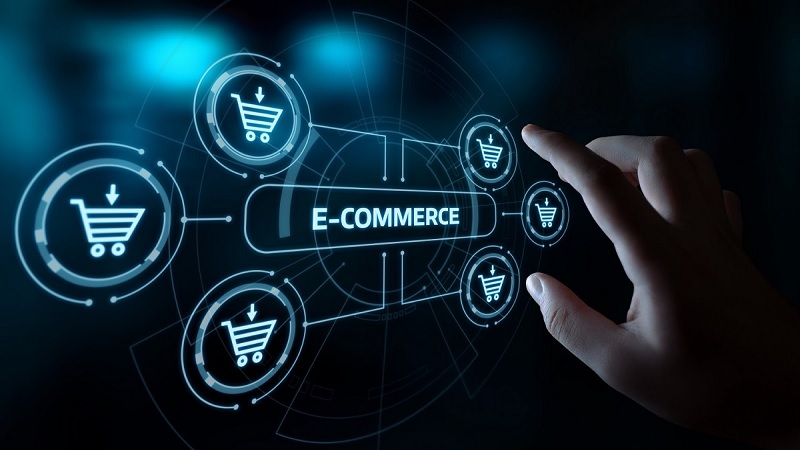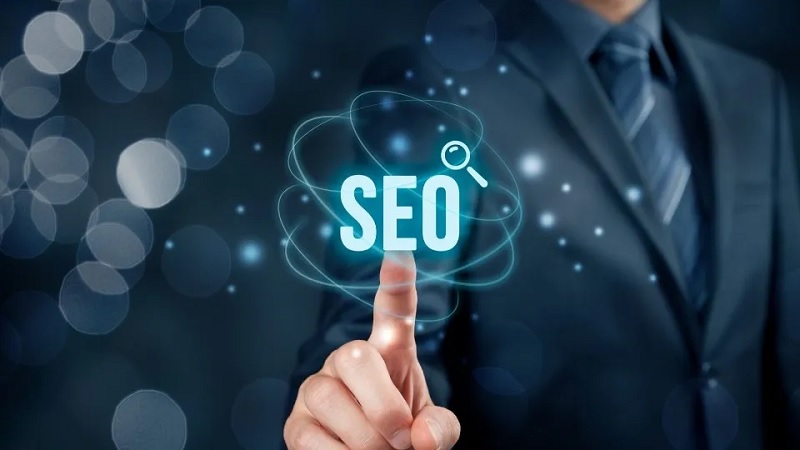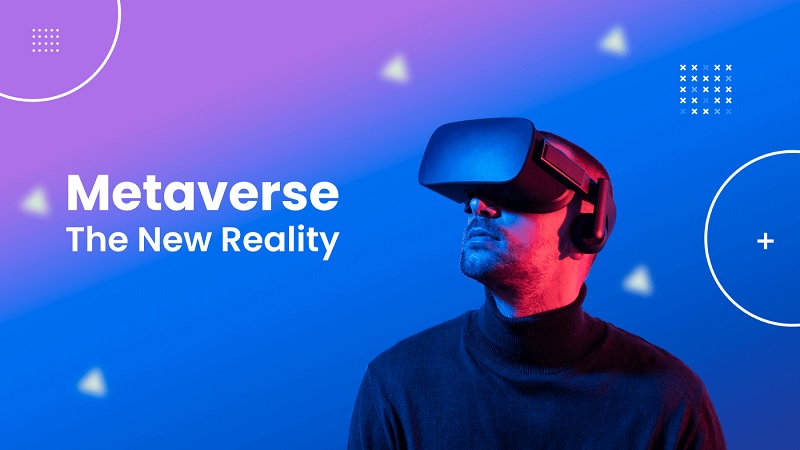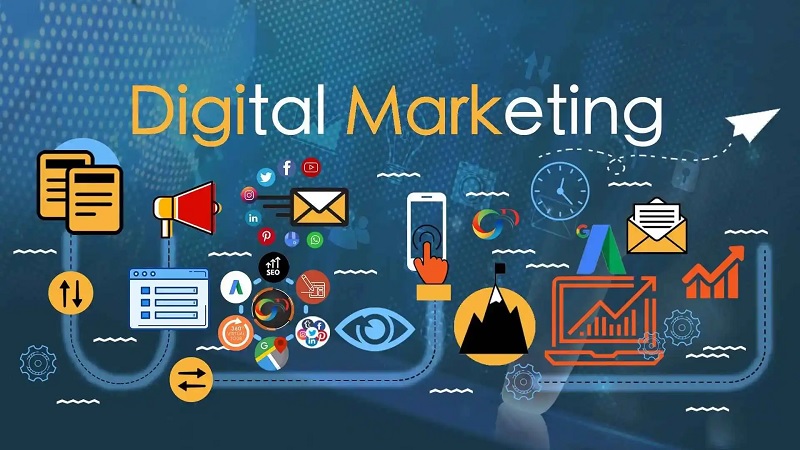YouTube has become one of the largest and most popular video-sharing platforms in the world, with billions of users and countless hours of content being uploaded and consumed every day. For many people, YouTube offers an opportunity to make money and earn a living by creating and sharing content that they are passionate about. In this article, we will explore the various ways in which people can earn money from YouTube and the key strategies and tactics that they can use to make the most of these opportunities. Creating and Monetizing a YouTube Channel The first step in earning money from YouTube is to create and monetize a channel. This involves setting up an account, uploading videos, and engaging with your audience. To monetize your channel, you will need to enable monetization in your account settings and link your channel to a Google AdSense account. This will allow you to earn money from the ads that are displayed on your videos. Additionally, you can also monetize your channel by participating in YouTube’s Partner Program, which gives you access to a range of benefits and earning opportunities. Building an Engaged Audience One of the most important factors in earning money from YouTube is building an engaged audience. This involves creating content that is high-quality, relevant, and interesting to your audience, as well as engaging with your viewers through comments, replies, and other forms of interaction. By building a strong and engaged audience, you can increase your earning potential, as well as create a community of loyal followers who will support you and your channel. Leveraging Sponsored Content and Product Placements In addition to earning money from ads, you can also monetize your channel by partnering with brands and creating sponsored content or product placements. This can include creating sponsored videos, product demonstrations, and reviews, as well as partnering with brands to create custom content that is relevant and engaging to your audience. By leveraging these opportunities, you can increase your earning potential and provide value to both your viewers and your partners. Creating and Selling Merchandise Another way to earn money from YouTube is to create and sell merchandise related to your channel. This can include t-shirts, hats, stickers, and other items that are related to your content and your brand. By creating and selling merchandise, you can tap into an additional stream of revenue and increase your earning potential. Offering Paid Subscriptions and Memberships Finally, you can also earn money from YouTube by offering paid subscriptions and memberships to your viewers. This can include access to exclusive content, early access to new videos, and other benefits. By offering paid subscriptions and memberships, you can create a recurring stream of revenue and increase your earning potential. In conclusion, there are many ways in which people can earn money from YouTube, and the opportunities are growing all the time. Whether you are a seasoned content creator or just starting out, there are strategies and tactics that you can use to make the most of these opportunities and achieve your financial goals. By creating and monetizing a channel, building an engaged audience, leveraging sponsored content and product placements, creating and selling merchandise, and offering paid subscriptions and memberships, you can make money from YouTube and turn your passion for content creation into a successful and rewarding career.
Role of Digital Media in growth of Business
Digital Media The role of digital media in the growth of businesses has been rapidly increasing in recent years, and it is now an essential component of success for companies of all sizes and industries. With the rise of the internet and the increasing availability of digital technologies, businesses have access to a vast and diverse array of tools and platforms that can be leveraged to reach customers, build brand awareness, and drive growth. In this article, we will explore the role of digital media in the growth of businesses, and the key strategies and tactics that businesses can use to make the most of these opportunities. The first step in leveraging digital media to drive business growth is to establish a strong online presence. This can be done through the creation of a professional website, as well as social media accounts on platforms such as Facebook, Twitter, and Instagram. These platforms provide businesses with a way to reach customers, build brand awareness, and engage with their audience. Additionally, businesses should also make use of search engine optimization (SEO) and content marketing to improve their visibility and attract more customers to their site. Social media is one of the most powerful tools available to businesses looking to leverage digital media to drive growth. With billions of users on platforms like Facebook, Twitter, and Instagram, businesses have access to a vast and diverse audience that they can reach and engage with. To make the most of social media, businesses should develop a comprehensive strategy that includes posting regular updates, responding to customer feedback and questions, and leveraging influencer marketing to reach new audiences. Data and analytics play a crucial role in helping businesses to understand the impact of their digital media efforts and make informed decisions about how to optimize and improve their strategies. By leveraging tools like Google Analytics and other web analytics platforms, businesses can track important metrics such as website traffic, customer engagement, and conversion rates. These insights can then be used to make data-driven decisions about how to improve digital media campaigns and drive better results. In addition to leveraging organic tactics, businesses can also invest in paid advertising to reach new customers and drive growth. This may include paying for ads on platforms like Google AdWords and Facebook, or leveraging other forms of digital advertising such as display ads, video ads, and influencer marketing. Paid advertising can be an effective way to reach new audiences, build brand awareness, and drive conversions, and it can be a powerful tool for businesses of all sizes and industries. Finally, it is important for businesses to stay up-to-date with the latest developments in digital media and emerging technologies. This may involve attending conferences and trade shows, following industry thought leaders, and investing in training and development opportunities for employees. By staying current and innovative, businesses can take advantage of new opportunities and stay ahead of the curve in the ever-evolving digital media landscape. In conclusion, the role of digital media in the growth of businesses is growing rapidly, and it is now an essential component of success for companies of all sizes and industries. By building a strong online presence, leveraging social media, utilizing data and analytics, investing in paid advertising, and staying up-to-date with emerging technologies, businesses can drive growth, reach new customers, and achieve their goals in the digital age.
Blogging in 2023
Blogging has been around for several years, and it has evolved tremendously since its inception. In the early days, blogging was a platform for personal journals or diary entries. As time passed, it became an essential marketing tool for businesses and individuals. In 2023, the blogging landscape has changed significantly, and this article will explore the new trends and innovations in the world of blogging. Increased Use of Video Content The use of video content has become increasingly popular in recent years, and it is expected to become even more popular in 2023. Video content is engaging, and it helps bloggers to reach a broader audience. With the rise of social media platforms like TikTok, Instagram Reels, and YouTube, bloggers are creating short videos that are entertaining and informative. Bloggers can use video content to complement their blog posts or create standalone video content. The use of video content will make blogs more engaging and increase their reach. The Emergence of Micro-Niche Blogging The world of blogging has become increasingly crowded, and it is becoming challenging to stand out. In 2023, we can expect to see a rise in micro-niche blogging. Micro-niche blogging is the creation of blogs that are focused on a specific topic or audience. Micro-niche bloggers will focus on creating content that is tailored to a specific audience, and this will help them to stand out in a crowded blogging space. Micro-niche blogging will also help bloggers to establish themselves as experts in their specific niche. The Rise of Artificial Intelligence (AI) Artificial intelligence (AI) has been around for several years, and its use is expected to increase in 2023. AI can be used in several ways in the world of blogging. One of the ways AI can be used is to help bloggers with content creation. AI tools can analyze the blogger’s writing style and suggest improvements to make the content more engaging. AI can also be used to automate tasks like social media posting and email marketing. The Growth of Podcasting Podcasting has been around for several years, and it is becoming more popular with each passing year. In 2023, we can expect to see more bloggers using podcasting as a tool to reach their audience. Podcasting is an excellent way for bloggers to create audio content that is informative and entertaining. With the rise of voice assistants like Amazon Alexa and Google Home, podcasting will become even more popular in the years to come. The Use of Interactive Content Interactive content is content that engages the reader and requires them to participate actively. Interactive content can be in the form of quizzes, polls, and surveys. The use of interactive content is expected to increase in 2023 as bloggers look for new ways to engage their audience. Interactive content is an excellent way for bloggers to get feedback from their audience and make improvements to their content. The Importance of Authenticity In 2023, the importance of authenticity will become even more apparent. With the rise of fake news and fake influencers, people are looking for authentic content. Bloggers who are authentic and transparent in their content creation will be more successful than those who are not. Authenticity will be crucial in building trust with the audience. The Use of Voice Search Voice search has become increasingly popular with the rise of voice assistants like Amazon Alexa and Google Home. In 2023, bloggers will need to optimize their content for voice search. Voice search optimization involves using long-tail keywords and natural language to create content that is optimized for voice search. Bloggers who optimize their content for voice search will be able to reach a broader audience. Importance of Mobile Optimization Mobile optimization is the process of designing and formatting a website or blog to ensure that it is easy to navigate and read on mobile devices. In today’s world, where mobile devices account for the majority of internet traffic, mobile optimization is essential for bloggers. Submitted by Uzair Ahmed
What is E-Commerce?
E-Commerce E-commerce, also known as electronic commerce, refers to the buying and selling of goods and services over the internet. It has been a game-changer for businesses and consumers alike, as it has completely transformed the way people shop and do business. It has become a popular alternative to traditional brick-and-mortar stores, as it provides a convenient and efficient way to buy and sell goods and services. It’s growth has been driven by advances in technology and the widespread adoption of the internet. Today, e-commerce is a global phenomenon, with millions of businesses selling products and services online. Benefits One of the main advantages of e-commerce is that it provides businesses with the ability to reach a wider audience. Traditional brick-and-mortar stores are typically limited by their geographic location, but with e-commerce, businesses can sell their products and services to anyone, anywhere in the world. This has led to the rise of online marketplaces, such as Amazon and eBay, which have become popular destinations for shoppers around the world. Another advantage of e-commerce is that it allows businesses to reduce their overhead costs. Businesses can eliminate the need for expensive retail space, which can be a significant expense for traditional brick-and-mortar stores. In addition, e-commerce allows businesses to automate many of their processes, such as inventory management and order processing, which can help to reduce labor costs. E-commerce has also made it easier for consumers to shop and compare products. Consumers can easily search for and compare products from multiple retailers, which can help them find the best deals and save money. In addition, it provides consumers with the convenience of shopping from home, which can save them time and eliminate the need to visit multiple stores. Challenges Despite its many benefits, e-commerce does come with some challenges. One of the main challenges is the issue of trust. With so many online retailers, it can be difficult for consumers to know which businesses are legitimate and which are not. To address this issue, many e-commerce businesses have implemented security measures, such as SSL encryption and secure payment systems, to ensure that their customers’ personal and financial information is protected. Another challenge is the issue of logistics. With online orders, businesses need to ensure that their products are delivered on time and in good condition. This can be a complex process, as it involves coordinating with shipping carriers and managing inventory levels. To address this challenge, many businesses have partnered with logistics companies to help manage their shipping and fulfillment operations. Opportunities E-commerce is also changing the way businesses market and advertise their products. Businesses can use a variety of digital marketing channels, such as social media, email marketing, and search engine optimization, to reach their target audience. This has led to a shift in advertising budgets away from traditional media, such as television and print, towards digital media. In addition, it has opened up new opportunities for businesses to collect and analyze data about their customers. With e-commerce, businesses can track their customers’ browsing and purchasing behavior, which can help them make informed decisions about their product offerings and marketing strategies. This has led to the rise of data-driven marketing, which uses data analysis to optimize marketing campaigns and improve customer engagement. As it continues to grow, it is likely that we will see further innovations and developments in this field. One area of particular interest is the use of artificial intelligence and machine learning to improve the e-commerce experience for both businesses and consumers. For example, AI could be used to personalize product recommendations based on a customer’s browsing and purchasing history, or to automate customer service interactions. How it is helpful for Youth E-commerce can be very helpful for young generations in several ways: In summary, e-commerce can be a great tool for young people to save time and money, access a wider range of products, and even start their own businesses. Submitted by Uzair Ahmed
What is Digital Economy and Its Growth 1
Digital Economy The digital economy refers to the economic activity that results from billions of daily online connections among people, businesses, devices, data, and processes. It refers to a new era of economic growth, driven by the Internet and related digital technologies, which are changing the way people live and work. The digital economy is a rapidly growing and evolving space that has completely transformed the way businesses operate and compete. From e-commerce and online marketplaces to social media and cloud computing, the digital economy encompasses a wide range of activities and technologies. The term “digital economy” was first introduced in the late 1990s and has since become a critical component of the global economy. Growth and Development In the digital economy, information and communication technologies (ICTs) play a central role in facilitating economic growth and development. The widespread adoption of these technologies has enabled businesses and individuals to access vast amounts of information and connect with others in real-time, regardless of their location. This has led to the creation of new business models and markets, and has transformed the way goods and services are produced and consumed. Innovation and Collaboration One of the key features of the digital economy is its emphasis on innovation and collaboration. The digital economy fosters innovation by enabling businesses and individuals to quickly and easily share ideas, knowledge, and information. This, in turn, helps drive the development of new technologies, products, and services. Additionally, the digital economy encourages collaboration between businesses, governments, and individuals, as well as between countries, by breaking down traditional barriers to communication and collaboration. Global Economy The digital economy is also characterized by its global reach. Businesses and individuals can participate in the digital economy from anywhere in the world, providing new opportunities for economic growth and development. The digital economy has created new markets and has increased access to goods and services, making it easier for people to participate in the global economy. In recent years, the digital economy has grown at an unprecedented pace, driven by advances in technology, increasing Internet connectivity, and the rise of mobile devices. The growth of the digital economy has created new job opportunities and has also helped to drive economic growth and development in many countries. Benefits of Digital Economy Despite its many benefits, the digital economy also presents some challenges. For example, the rapid pace of technological change has created new risks and challenges for businesses and individuals, particularly in terms of data privacy and security. Additionally, the digital economy has created a new digital divide, with some countries and individuals having limited access to digital technologies and the Internet, which can limit their ability to participate in the digital economy. Overall, the digital economy has had a profound impact on the global economy, transforming the way businesses and individuals interact and participate in the global marketplace. As the digital economy continues to evolve, it will likely continue to drive innovation, growth, and development for many years to come. User of Digital Economy in Pakistan In recent years, Pakistani’s government has shifted its focus towards digitisation and building a knowledge economy. Multiple concerned ministries, regulatory bodies, ad hoc committees, and task forces are working hard to facilitate digital transformation within the country. With over 64% of Pakistan’s population being under the age of 30, there is enormous potential for successful digital adoption, however, Pakistan continues to lag behind. As efforts are being made to speed up digitisation, regulatory concerns have become ever more pressing, including regulations around cloud computing, data protection, and cyber security. Balancing protective regulation with an environment that encourages innovation and digitisation, will enable Pakistan to make the most of new technologies. CERP Policy Advisory works with local and international stakeholders to develop a deep understanding of the policy and regulatory landscape in Pakistan and advise on high impact policy reforms to enable digital transformation. Submit by: Uzair Ahmed
Search Engine Optimization (SEO)
What is SEO? Search Engine Optimization (SEO) is the process of optimizing a website to improve its ranking in search engine results pages (SERPs) and increase its visibility and traffic. The ultimate goal of SEO is to attract more organic traffic to your site, which can result in increased leads, sales, and brand recognition. Optimizations SEO involves a combination of on-page and off-page optimization techniques that aim to make your website more attractive to search engines. On-page optimization refers to the changes you can make to your website content and structure, while off-page optimization refers to the actions you can take outside of your website to improve your search engine ranking. On-page optimization On-page optimization involves making changes to your website’s content and structure to make it more search engine friendly. This includes optimizing your page titles, meta descriptions, header tags, and keywords to help search engines understand the content of your site. Additionally, you can improve your website’s navigation and internal linking structure to make it easier for search engines and users to find what they are looking for. Another important aspect of on-page optimization is creating high-quality, original content that provides value to your users. Search engines favor websites that publish fresh, relevant, and engaging content, as this signals to them that your site is active and up-to-date. Additionally, incorporating keywords into your content can help improve your search engine ranking for those terms. Off-page optimization Off-page optimization refers to the actions you can take outside of your website to improve your search engine ranking. This includes building backlinks to your site, which are links from other websites that point to your site. Search engines view backlinks as a sign of authority and credibility, and they use this information to rank your site higher in search engine results. There are several ways to build backlinks to your site, including guest blogging, creating infographics, and participating in online communities related to your niche. Additionally, social media can also play a role in off-page optimization, as social signals, such as shares and likes, can indicate the popularity and relevance of your content. Another important aspect of off-page optimization is local SEO. If your business has a physical location, it is important to optimize your website for local search. This involves claiming your Google My Business listing, creating local citations, and optimizing your website for local keywords. By doing this, you can increase your visibility in local search results and attract more customers to your business. It is important to note that SEO is a long-term strategy, and results may not be immediate. However, by implementing best practices and regularly updating your site with fresh, relevant content, you can improve your search engine ranking over time. Conclusion In conclusion, Search Engine Optimization is a crucial component of any digital marketing strategy. By optimizing your website for search engines, you can increase your visibility and attract more organic traffic to your site, which can result in increased leads, sales, and brand recognition. By implementing both on-page and off-page optimization techniques, you can improve your search engine ranking and attract more customers to your business. Remember, SEO is a long-term strategy, and results may not be immediate, but with persistence and dedication, you can achieve the results you desire. Submitted by Uzair Ahmed
What is Metaverse?
Defining Metaverse The Metaverse is a term that has been gaining popularity in recent years, and refers to a virtual universe that acts as a collective space for people to interact, communicate and transact. It is a shared and interconnected virtual world that is created by the convergence of real and virtual reality. The Metaverse is not a new concept, it was first popularized by science fiction author Neal Stephenson in his novel “Snow Crash”. In the novel, the Metaverse is a virtual world that is inhabited by millions of people and is considered a parallel universe to the real world. Accessibility The concept of the Metaverse has evolved since its inception, and now refers to a virtual reality that is accessible to anyone with a computer and an internet connection. In the Metaverse, people can create and control their own digital avatars, interact with others in real-time, and participate in various virtual activities such as gaming, shopping, socializing and even working. The Metaverse is not limited to a single virtual world, it can be made up of multiple interconnected virtual realities, each with its own unique rules, environment, and experience. The development of the Metaverse is being driven by advancements in technology, particularly in the fields of virtual reality, augmented reality, and blockchain. Virtual reality technology is providing a more immersive and interactive experience for users, while blockchain is enabling secure and decentralized transactions within the Metaverse. With the integration of these technologies, the Metaverse has the potential to become a new global network that offers a range of benefits to its users. Benefits Interaction with People One of the most significant benefits of the Metaverse is the ability for people to interact with each other in a virtual environment that transcends geographical and physical boundaries. This opens up new possibilities for social interaction and communication, allowing people from all over the world to connect with each other in ways that were previously impossible. In the Metaverse, people can join virtual communities, attend virtual events, and even participate in virtual concerts and performances. Commerce & Trade Another benefit of the Metaverse is that it provides a new platform for commerce and trade. In the Metaverse, people can buy and sell virtual goods and services using digital currencies, enabling a new level of economic activity. This opens up opportunities for businesses to reach new customers and expand their markets, while also creating new job opportunities in areas such as virtual event planning, virtual real estate development, and digital content creation. Privacy The Metaverse is also seen as a potential solution to the issue of online privacy and security. With the decentralization of data storage and transactions through blockchain technology, the Metaverse offers a more secure and transparent environment for its users. This reduces the risk of data breaches, hacking, and other malicious activities, ensuring that users’ personal information is protected and their transactions are secure. In addition to the benefits mentioned above, the Metaverse also has the potential to revolutionize the way we live and work. In the Metaverse, people can work and collaborate with others from anywhere in the world, reducing the need for physical office spaces and commuting. This opens up opportunities for remote work and telecommuting, which can have a positive impact on the environment and people’s quality of life. Disadvantages Metaverse has the potential to offer numerous benefits, there are also several disadvantages that need to be considered. Regulation and Governance Main concern is the issue of regulation and governance. In the Metaverse, the rules and policies governing behavior and transactions are not clearly defined, making it difficult to enforce laws and prevent negative behaviors such as cyberbullying and fraud. This lack of regulation and oversight can also create a hostile environment where users are at risk of exploitation and abuse. Time The issue of addiction is another disadvantage of the Metaverse. With the ability to immerse oneself in a virtual world, people may spend excessive amounts of time in the Metaverse, neglecting real-life responsibilities and relationships. This can lead to a loss of touch with reality, causing harm to both the individual and their relationships. Financial aspect The financial aspect of the Metaverse is another area of concern. In the Metaverse, people can buy and sell virtual goods and services using digital currencies, which raises concerns about the stability of the virtual economy and the potential for speculative bubbles and market crashes. In addition, the use of digital currencies raises questions about the security of transactions and the potential for fraud and theft. Finally, the Metaverse has the potential to create a new form of social and cultural isolation. In the Metaverse, people can create and control their own digital avatars, which allows them to present a version of themselves that is not necessarily representative of their true identity. This can lead to a situation where people are more comfortable interacting with others in the Metaverse than in real life, causing them to withdraw from real-life relationships and interactions. Conclusion In conclusion, while the Metaverse has the potential to offer numerous benefits, there are also several disadvantages that need to be considered. These include the issue of accessibility, privacy and security, regulation and governance, addiction, financial stability, and social and cultural isolation. It is important for those who are involved in the development of the Metaverse to address these concerns in order to ensure that the Metaverse is a safe, accessible, and positive environment for everyone. Submitted by Uzair Ahmed
What is Digital Marketing?
Digital Marketing Digital marketing is a type of marketing that makes use of digital technologies, including the internet, mobile devices, social media platforms, search engines, and other digital channels to reach and engage with customers. It is a modern way of promoting products and services to a global audience and has become an essential aspect of any marketing strategy. The digital landscape has changed dramatically over the past decade, and businesses are now required to adapt their marketing strategies to keep up with the changes. Traditional marketing methods such as print, radio, and television advertisements are still being used, but digital marketing has become the primary means of reaching and engaging with customers. Benefits One of the biggest advantages of digital marketing is that it allows businesses to reach a large number of people quickly and efficiently. Digital marketing strategies can be tailored to specific target audiences, making it easier for businesses to reach the people who are most likely to be interested in their products and services. This is because digital marketing allows for the collection of data about customer behavior, preferences, and purchasing habits, which can be used to inform marketing strategies and improve their effectiveness. One more benefit of advanced showcasing is that it is financially savvy. Traditional marketing methods can be expensive, especially for small businesses, and often require large upfront investments. In contrast, digital marketing is more affordable and allows businesses to reach their target audience at a lower cost. This is because digital marketing allows for the targeting of specific groups of people and the use of various tactics to reach them, such as search engine optimization (SEO), pay-per-click advertising (PPC), social media advertising, and email marketing. Marketing Strategies SEO SEO is a digital marketing strategy that involves optimizing a website for search engines like Google. The goal of SEO is to increase the website’s visibility in search engine results pages (SERPs) and to attract more traffic to the site. This is achieved by using keywords that people are searching for and including them in the website’s content and meta data. PPC PPC advertising is another digital marketing strategy that involves placing ads on search engines, social media platforms, and other websites. The ads are shown to users who are searching for keywords related to the products or services being advertised. The advertiser only pays when a user clicks on their ad, hence the name “pay-per-click.” Social Media Advertising Social media advertising is another popular digital marketing strategy that involves placing ads on social media platforms such as Facebook, Twitter, Instagram, and LinkedIn. These ads can be targeted to specific groups of people based on factors such as demographics, interests, and behaviors. This type of advertising allows businesses to reach a large number of people quickly and effectively and is a cost-effective way to increase brand awareness and drive traffic to a website. E-Marketing Email marketing is a type of digital marketing that involves sending emails to a list of subscribers. The emails can be used to promote products, services, or events, or to provide information about the business. This type of marketing allows businesses to reach their customers directly and can be used to build relationships with customers and increase their loyalty to the brand. Conclusion In conclusion, digital marketing has become an essential aspect of any marketing strategy. It allows businesses to reach a large number of people quickly and efficiently, at a lower cost than traditional marketing methods. It also allows for the collection of data about customer behavior, preferences, and purchasing habits, which can be used to inform marketing strategies and improve their effectiveness. Whether you’re a small business or a large corporation, digital marketing is an effective way to reach your target audience and achieve your marketing goals. Submitted by Uzair Ahmed
PIC Organizes “Mobile Journalism” Training Workshops for Journalists
Islamabad: Pakistan Information Center (PIC) on Wednesday organized a two-day training workshop on “Mobile Journalism” at the Information Service Academy in pursuance of its journalist’s capacity building project directed by the Ministry of Information & Broadcasting. The head of Pakistan Information Center Saghir Watto welcomed the participants and briefed the importance of this media workshop for journalists. Eminent journalists with experience enlightened the participants about the importance of mobile journalism. The trainer Waseem Abbasi deliver his lecture on the technical aspects and the necessary guidelines on the use of mobile for media coverage. Mobile Journalism Waseem Qadri another expert gave the practice tips to operate the mobile for media production. The other speakers Naseem Siddiqui and renowned anchor/analyst Javed Chaudhry discussed the importance of mobile journalism in rising digital media industry. The participants expressed their gratitude to the Federal Minister for Information Ms. Maryam Aurangzeb, Secretary Information Ms. Shahira Shahid and Principal Information Officer Mubasher Hassan, describing the training workshop as very beneficial. The workshop organized regarding mobile journalism will continue on Thursday, February 9, in which important figures in the field of journalism, including the country’s renowned journalist Rauf Klasra, will participate as guest speakers.
How ChatGPT is Helpful for Youth?
ChatGPT is an artificial intelligence language model developed by OpenAI that has the ability to generate human-like text and answer questions with a high degree of accuracy. It has proven to be a useful tool for people from all walks of life, including the youth. In this article, we will discuss how ChatGPT can be beneficial for young people and how it can help them in various aspects of their lives. Education Education: ChatGPT can help students by providing them with instant answers to their questions. This can be particularly useful for students who are conducting research for a project or need help with their homework. It can also be useful for students who are learning a new subject or topic and need clarification on certain concepts. It can provide them with accurate and up-to-date information that they can use to further their knowledge and understanding. Career guidance Career guidance: Young people often face challenges in choosing the right career path. It can help them by providing information on various career options and the skills required for each. It can also help with job search assistance by providing information on job openings and the required qualifications. This information can help young people make informed decisions about their future careers. Mental health Mental health: Mental health is a critical issue for young people, and ChatGPT can play a role in addressing it. For example, ChatGPT can provide information on mental health and wellness, as well as provide resources for those who may need professional help. ChatGPT can also provide a safe and confidential outlet for young people to discuss their mental health concerns and receive support and advice. Personal growth Personal growth and development: ChatGPT can help young people grow and develop by providing them with resources and information on various topics such as self-improvement, relationships, and personal finance. It can also provide guidance on how to set goals and develop habits that support personal growth. Entertainment Entertainment: ChatGPT can also provide entertainment for young people. It can provide information on various topics such as movies, music, books, and video games. It can also provide recommendations for these activities based on the preferences and interests of the user. Accessibility Accessibility: ChatGPT is available 24/7, and young people can access it from anywhere with an internet connection. This makes it a convenient tool for them to use, especially for those who may have limited access to information and resources. Conclusion In conclusion, ChatGPT is a valuable tool for young people in many different aspects of their lives. It can provide them with accurate and up-to-date information, support, and guidance on a wide range of topics. With its accessibility and ability to generate human-like text, ChatGPT has the potential to be a valuable resource for young people as they navigate their way through life. Submitted by Uzair Ahmed






